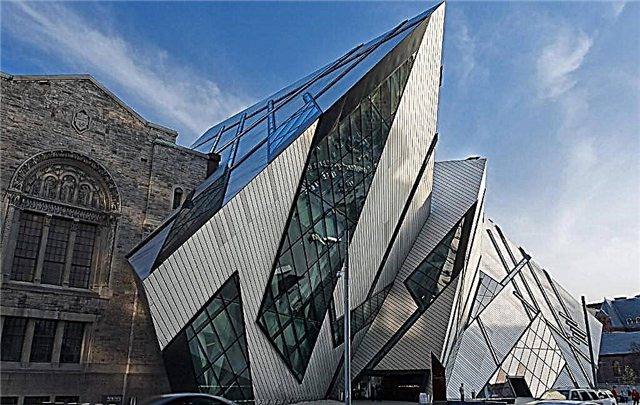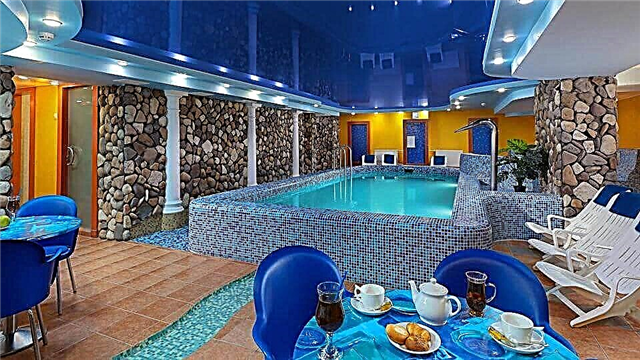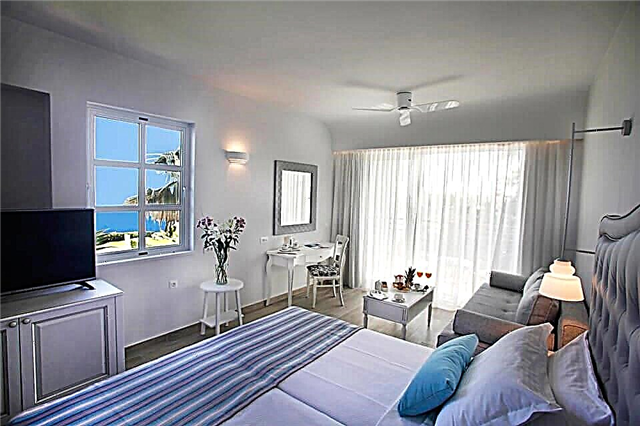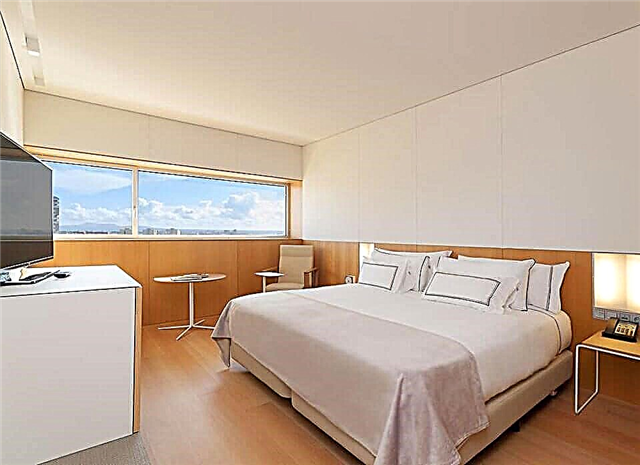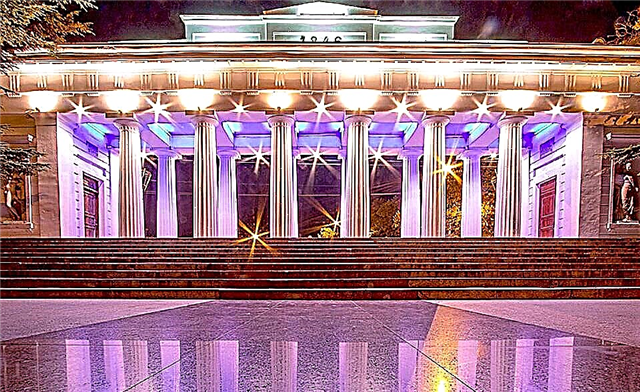To visit Crimea and not visit Sevastopol is like visiting Moscow and not walking along Red Square! Hero city, romantic, city of ships and sailors, snow-white handsome - one of the best cities in Russia. Objects, cathedrals, museums and monuments covered with military glory awaken the imagination, make the heart beat anxiously and joyfully and feel a sense of pride in some kind of involvement in all this.
It cannot be otherwise - so many dramatic events in the life of the country are associated with Sevastopol. Tolstoy, Bunin, Sergeev-Tsensky, Bulgakov paid tribute to the proud city, immortalizing its name. Recommendations on what to see in Sevastopol in 1 day on your own will help you to see the main attractions of the Crimean metropolis.
Kornilov embankment

If you thought that this name was dedicated to the notorious white general, then you would be wrong. The winding street located next to Primorsky Boulevard bears the name of the defender of Sevastopol, Vice Admiral Vladimir Alekseevich Kornilov. The hero of the Crimean War died in battle, and the grateful residents renamed Primorskaya Street into Kornilov Embankment in 1886.
You will see many memorials and memorable symbols while walking along one of the most popular promenades. Among them is a memorial plaque in honor of the sailors who participated in the 1st Russian Revolution, a memorial sign to Kornilov with the text of his last message. From this street you can see the famous monument - the Monument to the Scuttled Ships. On the Kornilov Embankment there are the Humanitarian University, the Palace of Childhood and Youth - one cannot pass by them indifferently.
The creative intelligentsia gathers here: artists, musicians, photographers, informal youth. Even in cute, cozy restaurants, a creative atmosphere reigns, especially on holidays. Today, the local community is actively fighting against the dominance of small shopping establishments and for the cleanliness of the historic street.
Monument to the Scuttled Ships

Passing along the neighboring Primorsky Boulevard, right into the sea, not far from the coast, you will see a majestic obelisk towering 17 meters above the water. The history of its appearance cannot but thrill to the depths of the soul. It is dedicated to the lost ships sacrificed to save the city from enemy ships of the fleets - participants in the Crimean War.
In order to prevent them from approaching the shores of the city, Prince Alexander Menshikov ordered to sink 5 old ships and 2 frigates at the entrance to the bay. The sailors of the sunken ships fought with the enemy from the shore. Later, all the remaining ships of the Black Sea Fleet were flooded, the need for which was said with sadness by V. Kornilov. Even the enemy's command appreciated the fidelity of the strategic decision.
The monument is dedicated not only to the sunken ships, but also to the entire heroic defense of Sevastopol, which lasted 349 days. 10 years after the end of the war, shipwrecks were raised to clear the bay. The magnificent monument, erected in 1905, marked the 50th anniversary of the first defense of the city. A granite "cliff" rises from the depths of the sea, on which a majestic Corinthian column is based, crowned with a bronze sculpture of a 2-headed eagle.
In its beak there is a wreath of laurel and oak leaves, to which an anchor is attached. A commemorative inscription is carved on the bronze plate of the pedestal. As a symbol of resilience, the monument withstood an earthquake, a mine explosion and enemy occupation, and in 1969 it deservedly appeared on the city's coat of arms. The author of the amazing monument is the Estonian sculptor Adamson.
Count's pier

Sevastopol Bay is a series of piers and piers, each of which has its own history. Among them it is worth choosing the main pier - the Grafskaya pier - a symbol of splendor and splendor of design. From pl. Nakhimov, it is separated by a majestic staircase, ending with 2 graceful pavilions with a colonnade. At first, the pier was called Catherine's, but the people called it Grafskaya in honor of the commander of the squadron, Count Voinovich.
His squadron was the first to dock at the dock. It offers wonderful sea views, so townspeople and tourists like to come here. Opposite the pier, the picturesque Pavlovsky Cape pleases the eye. On the left you can see the beauty of the Northern side, with the Konstantinovsky and Mikhailovsky forts. The architectural appearance of the classical design of the Grafskaya Wharf cannot but captivate.
The main entrance is decorated with rows of Doric columns connecting square pavilions decorated with exendras on the facades. Corner pilasters lend graceful solemnity to the structures. On the attic there are figures stamped - 1846 - the date of construction. The count's pier became another emblem of Sevastopol.
Military History Museum of the Black Sea Fleet

The oldest museum in the city, the exhibits of which were collected, what is called the whole world, was opened in 1869 in the house of General Totleben. At the same time, by decree of Alexander II, the institution received the ownership of a land plot for its development. In fact, it was a real museum complex reflecting the entire military history of the Black Sea Fleet.
Under him there was a parish school and a vocational school. Today the building, specially built for the museum, attracts attention with its solemn beauty; it is difficult to pass by it indifferently. Tens of thousands of exhibits demonstrate the rich military experience of the Black Sea Fleet. They were brought here even during the defense of the city: enemy trophies, party cards with traces of fresh blood, shells and more.
Partially destroyed by the war, the building was rebuilt in 3 years, and in 1948 it opened its doors to visitors again. Inspection of the exhibits, the general atmosphere is transferred to the era of the heroic defenses of the city, the participation of military sailors in the defense of the city. Among the exhibits are Osman Pasha's saber, a telescope and personal belongings of Admiral Nakhimov, and other exclusive items.
Aquarium Museum

The largest habitat for representatives of the marine and oceanic fauna is already famous for the fact that it was created on the initiative of the famous travel geographer Miklouho-Maclay. The aquarium-museum is the first such establishment, opened in Crimea in 1898. For a whole year, an endless queue of people wishing to see the "inhabitants" of the underwater depths lined up around it.
Today, the unique institution is united with the Institute of Biology of the Southern Seas, which employs hundreds of research scientists. A visit to the aquarium is an interesting immersion in the kaleidoscopic world of marine and oceanic fauna. Four thematic halls represent nearly 1,000 different species of fish and animals, from the simplest specimens to incredibly fantastic individuals. They were collected from the sea in different parts of the oceans.
The central hall has a large swimming pool in which sturgeon fish live. There are aquariums along the entire perimeter of the hall, where you can see rare species of fish. Sea urchins, piranhas and other exotic species flicker in a multicolored round dance behind the glass. One of the halls displays giant sea turtles and sharks. In the recently organized terrarium, you can see rare species of snakes, spiders, lizards. From here you will not leave disappointed.
Sinop stairs

Of the 600 stairs, Sinop descent should be preferred. This is the longest staircase in the city, arranged on the Central Hill, was created in the 50s of the last century in honor of the great victory of the Black Sea Fleet over the Turks in the Sinop Bay (1853). It is not inferior in grandeur and scale to the Potemkin Stairs in Odessa. The project, carried out by 4 architects, has received a brilliant embodiment.Sinop descent is the pride of the city, a popular tourist destination.
Wide steps start at the Kornilov embankment, then they are interrupted by Nakhimov Ave. and majestically continue with 2 marches between beautiful buildings. Forming a further polygonal platform and bypassing it, the staircase is divided into 2 ramps. The area, transformed by skilled florists into a multi-colored carpet of fresh flowers, causes everyone to delight. Walking up the steps, you will go to the top of the hill, to pl. Lenin. To the left of the stairs there is a symbolic building of the headquarters of the Black Sea Fleet. Standing at the foot of the monument, you will see the Sevastopol roadstead, the Konstantinovskaya battery and all the beauty of the bay.
Tower of winds

One of the most beautiful old buildings of the city with a romantic name - the Tower of the Winds - is located on a hill in the very center of the historical part. This is a unique architectural monument that has preserved its original appearance. The Tower of Winds was erected as an outlet for the air intake for the book depository of the Maritime Library.
It, like the library building, was built in the Greek style by analogy with the Athenian Tower (1st century BC), making minor changes to the project. During the fierce shelling during the defense of the city, almost all structures on the hill were destroyed. But the 8-sided building of the tower survived, and today it pleases the eyes of local residents and tourists with its beauty. Each facet symbolizes a certain side of the world, marked by the image of the corresponding God.
According to Greek mythology, the north side is decorated with a sculpture of Boreus, the north-west - Skaryna, the east - Aphelios, etc. High arched openings give the tower lightness and grace. The conical roof is crowned with a pedestal with a spire. Attached under one of the arches is a table with the inscription "Tower of the Former Naval Library". Opposite the tower, in the Vladimir Cathedral, lies the ashes of Admiral Lazarev, the creator of the Maritime Library.
St. Vladimir's Cathedral

Opposite the Tower of the Winds there is a monumental building of the Vladimir Cathedral - an important shrine for the city. The cathedral, which had been erected for 30 years, became the burial vault for many valiant officers of the World Championship of the Fleet, participants in the Crimean War. This historical and architectural monument of the 2nd half of the 19th century. survived many shelling, oblivion in Soviet times and managed to survive to this day. For 8 years (1965-73) the restoration of the cathedral was going on.
In 1992, the tomb was restored, reburying 4 prominent admirals. In addition to them, the ashes of 13 more admirals of the World Championship of the Fleet are buried here, therefore the cathedral is otherwise called the Admiralty Cathedral. The domed structure, 13 m high, 21 m wide, is divided into an upper and a lower temple. In the upper part there are marble slabs with the names of 72 officers-heroes engraved on them.
In the lower church is the tomb of the main admirals: Kornilov, Istomin, Lazarev, Nakhimov. Their names are etched in gold on black diorite slabs. Funeral services for the dead sailors are held here regularly on May 13, February 9 and 15. Here the funeral service was given to the submariners of the Kursk in 2001, and every year they hold services in memory of them. Vladimirsky Cathedral is the center of the spiritual life of the townspeople.
Peter and Paul Cathedral

A magnificent structure of white limestone, with massive Doric columns, in appearance resembling an ancient temple - Peter and Paul Cathedral. It is also located on the Central Hill of the city, being its undoubted decoration. The architecture, atypical for an Orthodox cathedral, was embodied according to the idea of the building customer - Admiral Lazarev, who was then fond of antiquity.
The church was built on the site of the former wooden one, destroyed by a storm (1832). You can endlessly admire the brainchild of the architect Rulev, from which the prosperity of his career began. The three-cornered pediments of the facades, decorated with bas-reliefs, are crowned with Orthodox crosses. In front of the cathedral there are bronze sculptures of Saints Peter and Paul.
Initially, their statues were installed in the wall niches at the main entrance - they disappeared during the defense. The temple itself was destroyed by 2 wars, but "rose from the ashes" each time in its original form. Over the years of the existence of the cathedral, various institutions were located in it in turn. Today it is active, with services on weekends and church holidays.
Museum complex "35th coastal battery"

This museum complex is a tribute of respect and gratitude to the defenders of the city, who were surrounded in July 1942. The 35th armored turret battery operated on this site, the soldiers of which selflessly repulsed the enemy attack. On the same site in May 1944, the last battle with the Nazis took place, as a result of which Sevastopol was liberated from the invaders. Therefore, it was at the 35th battery in 2008 that a museum complex was organized with funds raised by the people.
Events that decide the fate of the city come to life before the eyes of visitors. You will walk through the park of trenches, see parapet with a list of army units participating in the defense, and a memorial map. You can go to the chapel built on the territory of the complex. Temporary exhibitions are held in the administration building, documentaries are shown. The Pantheon of Memory is open here, where there is a memorable list of 42 thousand defenders of Sevastopol, and it is constantly updated. For residents, the 35th battery is a sacred place.
Lazarev Square

A small square of a 3-sided shape, formed in the city after the Crimean War, changed its name several times. The name of Admiral Lazarev was given to her only in 1993 to perpetuate the well-deserved memory of him. 7 streets branch off from it in different directions. The center of the square is decorated with a 3-sided flower bed with a cedar growing in the middle.
The main attraction is the architectural ensemble of buildings for various purposes. All of them are built in the same Stalinist Empire style from white Inkerman stone. Each building is an interesting object of inspection. Turrets with colonnades on the roofs - the unifying architectural element adorns them. The most interesting building is the building belonging to the Chernomorets Design Bureau.
Numerous arched spans, arched windows give it an airy lightness. In one of the niches there is a sculptural portrait-bust of Lazarev. Here are the shops "Chernomorochka", "Detsky Mir", unfortunately, have lost some of the harmony of architecture as a result of reconstruction.
Panorama "Defense of Sevastopol 1854-1855."

The cult site of the city, a symbol of the immortality of the feat of its defenders, is located in the center of the Bastion Hill. The panorama, created by the master of battle painting Roubaud for the 50th anniversary of the heroic battle, was seriously damaged during the Second World War. Despite incredible efforts to save her, only 2/3 of Roubaud's canvases were preserved. Fragments of this picture are displayed today on the 1st floor of the building.
The showcases, designed as a ship siding, contain genuine rarities of the Crimean War period: weapons, decorations, documents, personal belongings of soldiers. The second floor of the building is occupied by a panorama 114 m long, 14 m high, created by the hands of Soviet artists. The canvas depicts more than 4 thousand people, including well-known people.
The famous surgeon Pirogov, who first applied anesthesia, the sailor Koshka, and others. When viewing the panorama, it seems that the audience is observing the events of the defense from the observation deck imitating the Malakhov Kurgan. The subject composition that illustrates the defense situation is impressive: a batman taking water, a killed soldier, a galley, etc. Many of these exhibits are genuine rarities.
Malakhov Kurgan

The world-famous point of the city - the blood-soaked Malakhov mound, sung in poems, songs and stories - is another sacred place for Russians. A strategically important facility in the 19th century was located outside the city, now the famous mound is within the city limits. At its top stands a preserved defense tower, which houses a branch of the Central Museum of Heroic Defense and the torch of the Eternal Flame.
The entire territory of the mound is surrounded by a park that was laid out here after the war.
Usually everyone walks along the "Friendship Alley", many trees of which were planted by honorary people, the main figures of the USSR, representatives of foreign delegations. There is a tree in the park, planted, for example, by Gagarin. Among the dense greenery, massive cast iron memorial plates are installed on the pedestals, symbolizing various batteries. Some of them are marked with standing cannons and cannons.
Sapun Mountain

Another monument dedicated to the heroic defense is located 12 km from the city - the Sapun Gora Memorial Complex. It is part of the State Museum, embodying the feat of the Soviet soldiers who liberated Sevastopol from the Nazis. The 2-storey building of the Diorama in the shape of a semicircle, with a balcony along the entire perimeter, was designed by the architect Petropavlovsky. The lower portal is edged with gray granite.
The canvas "Storming Sapun Mountain on May 7, 1944" illustrates the events of that fateful day. The talented artists of the Military Studio named after V.I. Grekov. The exposition of the lower halls tells about the situation in Sevastopol during the Second World War: the situation during shelling, air raids, front-line reports. All types of military equipment involved in the defense are presented here. The eternal flame burns near the snow-white obelisk.
Cape Fiolent

A natural pearl of Crimea, a unique volcanic formation, Cape Fiolent is located 10 km from Balaklava. Otherwise, it is called St. George, by analogy with the monastery built there, erected in honor of St. George the Victorious. A legend about the miraculous rescue of sailors is associated with it: during a storm, their ship was nailed to the cape, thanks to the icon of St. George.
The cape overgrown with juniper is the most ecologically clean place not only in Crimea, but throughout Russia. Quaint volcanic formations make the landscape of Fiolent truly fantastic. Mysterious caves, many grottoes, extraordinary rocks, unique beaches attract the attention of thousands of tourists and divers. Although Cape Fiolent is a protected area, it is allowed to set up a tent city here, to live as "savages" among natural wonders.
Jasper Beach is very popular. The azure purity of the sea, long coastal zone, fantastic cliffs attract beach lovers and fishermen. Here you can admire dolphins frolicking in the water, visit Diana's grotto.



